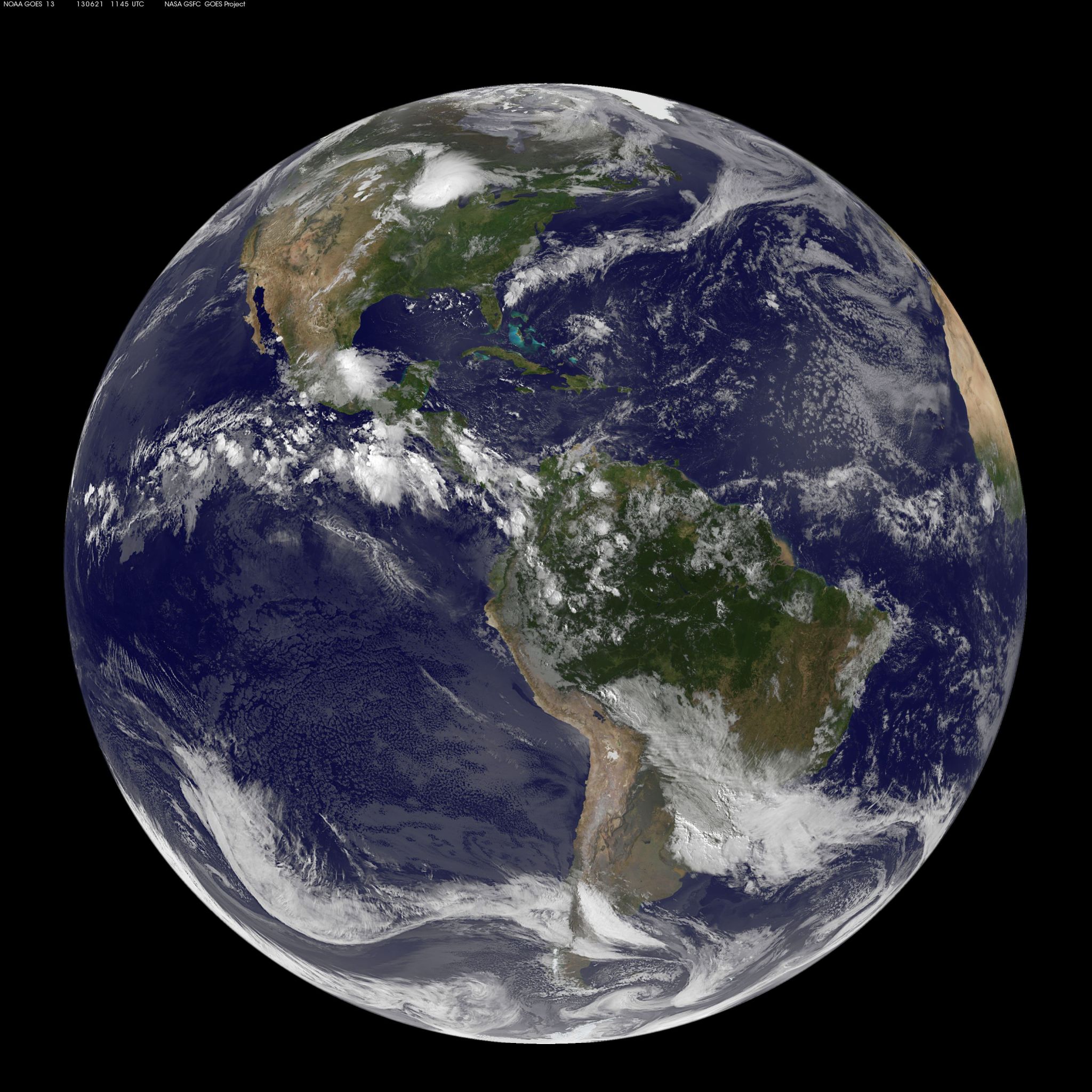Summer Begins in Northern Hemisphere
- The first day of summer in the Northern Hemisphere is June 20, 2025, which is also the longest day of the year.
- The Southern Hemisphere experiences its shortest day and beginning of winter on June 20, 2025.
- Earth orbits at an angle, causing the Northern Hemisphere to tilt towards the Sun during summer and away from it during winter.
- The solstices occur twice a year, when the Earth’s tilt is most pronounced, resulting in extreme seasonal changes.
- The start of astronomical summer marks the beginning of the six-month period when the Northern Hemisphere receives more sunlight than any other time of the year.
This full-disk image from NOAA’s GOES-13 satellite was captured at 7:45 a.m. EDT (11:45 UTC) and shows the Americas on June 21, 2012, the start of astronomical summer – in the Northern Hemisphere – that year.
The first day of summer in 2025 is June 20; it is also the longest day of the year. In the Southern Hemisphere, it’s the shortest day of the year and the beginning of winter.
Earth orbits at an angle, so the Northern Hemisphere is tilted toward the Sun half of the year — this is summer in the Northern Hemisphere, and winter in the Southern Hemisphere. The other half of the year, the Northern Hemisphere is tilted away from the Sun, creating winter in the north and summer in the south. Solstices happen twice per year, at the points in Earth’s orbit where this tilt is most pronounced.
Image credit: NASA
link
Q. When does summer begin in the Northern Hemisphere?
A. Summer begins in the Northern Hemisphere on June 20, which is also the longest day of the year.
Q. What happens to the Southern Hemisphere during astronomical summer?
A. In the Southern Hemisphere, it’s the shortest day of the year and the beginning of winter.
Q. Why does the Northern Hemisphere experience summer while the Southern Hemisphere experiences winter at the same time?
A. The Northern Hemisphere is tilted toward the Sun half of the year, resulting in summer, while the other half is tilted away from the Sun, creating winter.
Q. How often do solstices occur?
A. Solstices happen twice per year, at the points in Earth’s orbit where the tilt is most pronounced.
Q. What is the significance of June 21 in astronomical terms?
A. June 21 marks the start of astronomical summer in the Northern Hemisphere and the beginning of winter in the Southern Hemisphere.
Q. Why does the angle of Earth’s orbit affect the seasons?
A. The angle of Earth’s orbit causes the Northern Hemisphere to be tilted toward or away from the Sun, resulting in different seasons.
Q. What is the tilt of the Northern Hemisphere during astronomical summer?
A. During astronomical summer, the Northern Hemisphere is tilted toward the Sun.
Q. How does the tilt of the Northern Hemisphere affect the Southern Hemisphere?
A. The tilt of the Northern Hemisphere causes it to be tilted away from the Sun, resulting in winter in the north and summer in the south.
Q. What time was the image captured by NOAA’s GOES-13 satellite on June 21, 2012?
A. The image was captured at 7:45 a.m. EDT (11:45 UTC) on June 21, 2012.
Q. Why is June 20 significant in astronomical terms?
A. June 20 marks the first day of summer in 2025 and also the longest day of the year.

